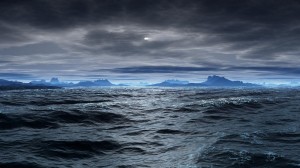Mar Ecol Prog Ser
Vol. 330: 127–137, 2007 Published January 25
Kathryn L. Markey1, 2, Andrew H. Baird3, Craig Humphrey2, Andrew P. Negri2,*
1 School of Marine Biology and Aquaculture, and 3ARC Centre of Excellence for Reef Studies, James Cook University,
Townsville, Queensland 4811, Australia
2 Australian Institute of Marine Science, PMB
3, Townsville, Queensland 4810, Australia
ABSTRACT: Coral reefs are under threat from land-based agricultural pollutants on a global scale.
The vulnerability of early life stages of corals is of particular concern. Here, we compared the sensitivity
of gametes, larvae and adult branches of the broadcast-spawning coral Acropora millepora
(Ehrenberg) to a number of common pollutants, including 4 classes of insecticides—2 organophosphates
(chlorpyrifos, profenofos), an organochlorine (endosulfan), a carbamate (carbaryl) and a
pyrethroid (permethrin)—and a fungicide (2-methoxyethylmercuric chloride, MEMC). Fertilisation
of gametes was not affected by any of the insecticides at concentrations up to 30 μg l–1. In contrast,
settlement and metamorphosis were reduced by between 50 and 100% following 18 h exposure to
very low concentrations (0.3 to 1.0 μg l–1) of each insecticide class. The insecticides had few visible
effects on adult branches following 96 h exposure to a concentration of 10 μg l–1, with the exception
of profenofos, which caused polyp retraction, bleaching (i.e. algal symbiont densities were reduced)
and a slight reduction in photosynthetic efficiency of the algal symbionts. The fungicide MEMC
affected all life-history stages: both fertilisation and metamorphosis were inhibited at 1.0 μg l–1, and
polyps became withdrawn and photosynthetic efficiency was slightly reduced at 1.0 μg l–1. At 10 μg
l–1 MEMC, branches bleached and some host tissue died. This high susceptibility of coral larvae to
pesticides at concentrations around their detection limit highlights the critical need to assess toxicity
against all life-history stages of keystone organisms: to focus on mature individuals may underestimate
species sensitivity.
